
Samaipaticereus is a monotypic genus of cactus containing the sole species Samaipaticereus corroanus. It is known only from East Andean Bolivia and Peru.

Yungasocereus is a monotypic genus of cacti. Its sole species is Yungasocereus inquisivensis, native to Bolivia.

Cleistocactus winteri is a succulent of the family Cactaceae. Its common name is the golden rat tail. Cleistocactus winteri subsp. colademono, as its synonym Cleistocactus colademononis, has gained the Royal Horticultural Society's Award of Garden Merit.

Leucostele atacamensis (cardón) is a species of cactus from Chile, Argentina and Bolivia. The wood of this species can be used in building and in making furniture.

Leucostele terscheckii, commonly known as the cardon grande cactus or Argentine saguaro, is a large cactus native to South America and popular in cultivation.

Cleistocactus tominensis is a species of columnar cactus in the genus Cleistocactus, endemic to Bolivia, where it is found in forests, on cliffs, and in inter-Andean valleys at altitudes of 900 to 2,200 meters.
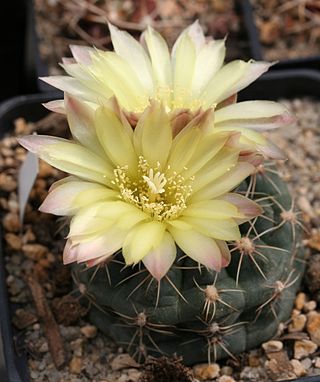
Gymnocalycium andreae is a species of Gymnocalycium from Argentina.

Oreocereus trollii, commonly known as the Old Man of the Andes cactus, is a species of cacti native to Argentina and Bolivia. Though listed as Least Concern by the IUCN, the plant is collected extensively, and in some areas is threatened.
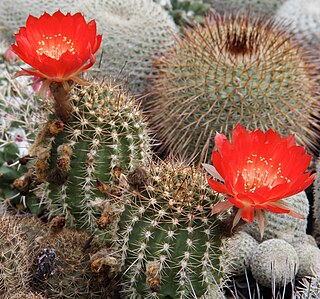
Lobivia hertrichiana, is a species of Lobivia found in Bolivia and Peru.
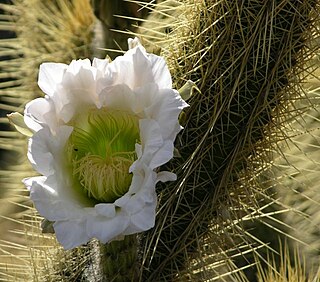
Soehrensia camarguensis, is a species of Soehrensia found in Bolivia.

Cereus lanosus or is a species of columnar cactus found in Central, Cordillera, Concepción, and Paraguarí departments of Paraguay. The plant is found growing in rocky hills at elevations of 250 and 300 meters.

Mirabella estevesii, synonym Cereus estevesii, is a species of columnar cactus found in Minas Gerais, Brazil. The first description was published in 2004 by Pierre Josef Braun as Cereus estevesii.

Corryocactus apiciflorus or is a species of columnar cactus found in Peru.

Corryocactus erectus or is a species of columnar cactus found in Peru.
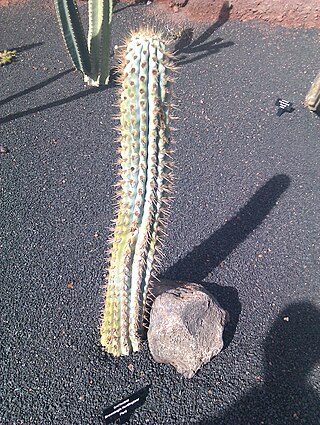
Browningia hertlingiana is a species of Browningia found in Peru.
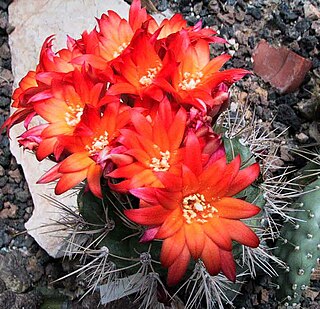
Matucana oreodoxa is a species of Matucana found in Peru.

Cleistocactus buchtienii is a species of columnar cacti in the genus Cleistocactus.
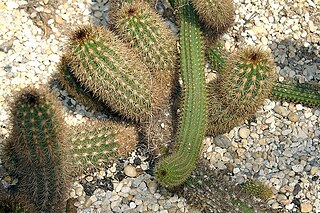
Haageocereus acranthus is a species of Haageocereus found in Peru.
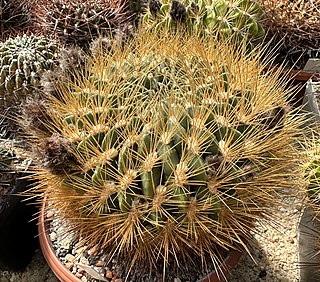
Lobivia chrysochete is a species of Lobivia found in Bolivia and Argentina.
Lobivia pugionacantha, is a species of Lobivia found in Argentina and Bolivia.



















